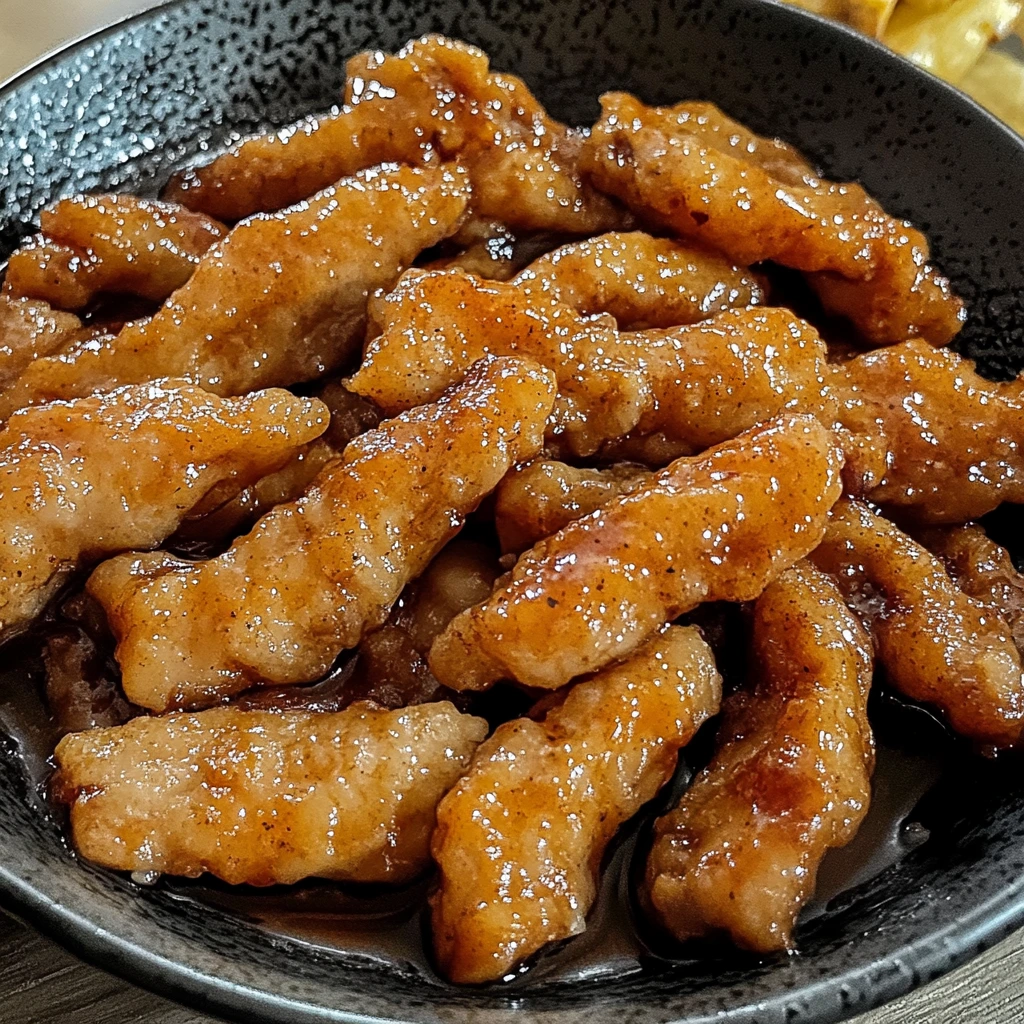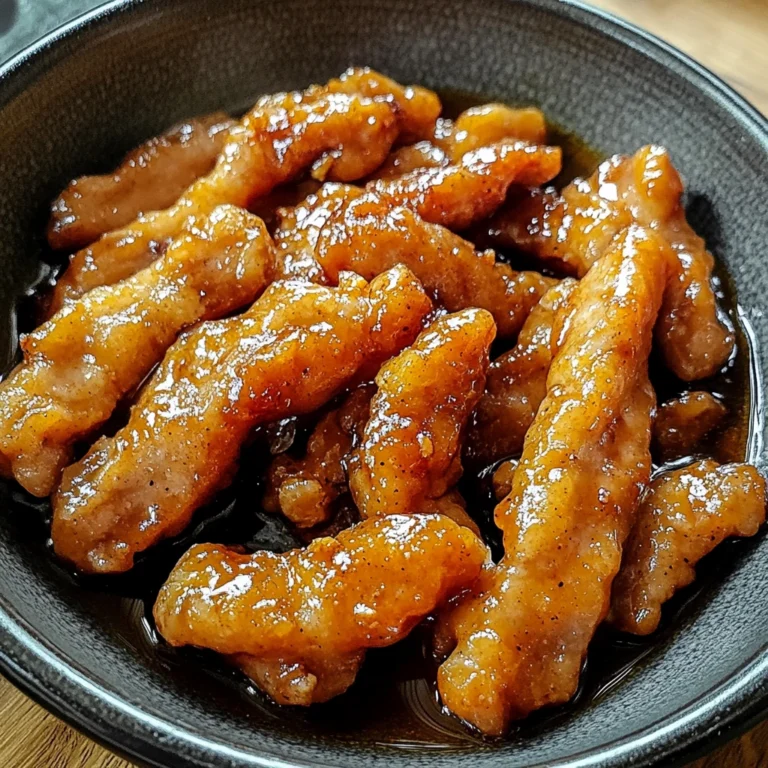Embark on a delectable journey through the vibrant flavors of Chinese cuisine with our mouthwatering recipe for Chinese Sweet And Sour Pork. This classic dish, rooted in the harmonious balance of sweet and tangy notes, is a beloved staple that has captivated taste buds around the world. Get ready to indulge in crispy, juicy pork morsels coated in a glossy, flavor-packed sauce that will have you craving more with every bite.
Table of Contents
The Origins of Sweet and Sour Flavor in Chinese Cuisine
The alluring combination of sweet and sour flavors has long been a hallmark of Chinese cooking. This harmonious pairing can be traced back to the ancient principles of yin and yang, where opposites are balanced to create a harmonious whole. In the case of Chinese Sweet And Sour Pork, the sweetness from sugar or fruit juices is expertly balanced by the tanginess of vinegar or citrus, resulting in a symphony of flavors that tantalizes the taste buds.
Why Sweet And Sour Pork is a Popular Dish
The enduring popularity of Chinese Sweet And Sour Pork can be attributed to its irresistible blend of textures and flavors. The crispy, golden-brown exterior of the pork contrasts beautifully with the tender, juicy interior, while the sweet and sour sauce creates a delightful interplay of tastes. This dish is a true crowd-pleaser, appealing to a wide range of palates and making it a staple on Chinese restaurant menus and in home kitchens alike.
Ingredients for Chinese Sweet And Sour Pork
Main Ingredients Used in Chinese Sweet And Sour Pork
To create this classic Chinese Sweet And Sour Pork recipe, you’ll need the following key ingredients:
- Pork Scotch (cut into 1cm thick pieces) – This tender, flavorful cut of pork is ideal for achieving the perfect texture in the dish.
- Chinese Dark Vinegar – This adds the signature tangy note to the marinade and sauce.
- Soy Sauce – Providing depth of flavor and umami, soy sauce is an essential component.
- Sugar – Balancing the acidity, sugar helps create the sweet-and-sour flavor profile.
- Five Spice Powder – This blend of aromatic spices, including cinnamon, cloves, and star anise, lends a distinctive Chinese flair.
- Rice Wine – Enhancing the overall flavor and tenderizing the pork, rice wine is a key ingredient.
- Cornstarch and Flour – These starches create a crispy coating for the pork when deep-fried.
- Oil – A generous amount of oil is needed for deep-frying the pork to perfection.
The Role of Each Ingredient in Flavor and Texture
Each component in this Chinese Sweet And Sour Pork recipe plays a vital role in achieving the desired flavors and textures. The marinade, comprising vinegar, soy sauce, sugar, and five-spice powder, infuses the pork with a complex blend of savory, sweet, and aromatic notes. The cornstarch and flour coating creates a delightful crunch when the pork is deep-fried, while the rice wine tenderizes the meat. Finally, the sweet and sour sauce, made with ketchup, vinegar, sugar, and soy sauce, ties all the elements together, resulting in a harmonious and irresistible dish.
Variations of Ingredients and Substitutions
While the classic Chinese Sweet And Sour Pork recipe calls for the specific ingredients listed, there are opportunities to explore variations and substitutions to suit your personal preferences or dietary needs. For instance, you could use a different cut of pork, such as shoulder or loin, or even experiment with chicken or tofu as the protein. Additionally, you could swap out the Chinese dark vinegar for rice vinegar or apple cider vinegar, or use brown sugar or honey instead of granulated sugar. The key is to maintain the balance of sweet and sour flavors while tailoring the dish to your taste buds.
Preparation Steps for Chinese Sweet And Sour Pork
Marinate Pork
Begin by combining the pork pieces with the Chinese dark vinegar, soy sauce, sugar, five-spice powder, and rice wine in a bowl. Mix everything together thoroughly, cover, and let the pork marinate for at least 30 minutes, allowing the flavors to infuse the meat.
Prepare Coating
In a separate bowl, mix the cornstarch and flour. Toss the marinated pork pieces in the flour mixture until they are evenly coated, ensuring a crispy texture once fried.
Heat Oil
Heat a generous amount of oil in a deep pot or wok over medium-high heat, bringing it to a temperature of around 180°C (350°F). Carefully add the coated pork pieces in batches and fry them until they are golden brown and crispy, about 4-5 minutes. Drain the fried pork on paper towels to remove any excess oil.</
Make Sweet and Sour Sauce
In a separate pan, combine the ketchup, white vinegar, sugar, soy sauce, and water. Bring the mixture to a boil over medium heat, stirring constantly. Once it’s simmering, add the cornstarch slurry and continue to stir until the sauce thickens and becomes glossy.
Combine and Serve
Finally, add the crispy pork pieces to the sweet and sour sauce, gently tossing to ensure the pork is evenly coated. Serve the Chinese Sweet And Sour Pork hot, accompanied by steamed rice or stir-fried vegetables for a complete and satisfying meal.

Tips for Perfecting Your Chinese Sweet And Sour Pork
Choosing the Right Cut of Pork
While the recipe calls for pork scotch, you can also experiment with other cuts like pork shoulder or loin. The key is to select a cut that is tender and has a good balance of fat and lean meat, which will ensure the pork remains juicy and flavorful after frying.
Achieving Optimal Crispiness
To achieve the perfect crispy texture, it’s essential to fry the pork at the right temperature and in small batches. Maintain the oil temperature between 180-190°C (350-375°F) and avoid overcrowding the pot, as this can cause the temperature to drop and result in soggy pork.
Balancing Sweetness and Sourness in the Sauce
The hallmark of a great Chinese Sweet And Sour Pork dish is the harmonious balance between sweetness and sourness in the sauce. Adjust the ratios of sugar, vinegar, and soy sauce to your personal taste, adding more or less of each ingredient until you achieve the perfect flavor profile that tantalizes your palate.
Serving Suggestions for Chinese Sweet And Sour Pork
Pairing with Rice and Vegetables
The classic accompaniment to Chinese Sweet And Sour Pork is steamed white rice, which provides a neutral base to soak up the delectable sauce. For a more complete meal, consider serving the pork with stir-fried vegetables, such as bell peppers, onions, and pineapple, for a vibrant and well-rounded dish.
Presentation Tips for Serving
When it comes to serving Chinese Sweet And Sour Pork, attention to presentation can elevate the overall dining experience. Arrange the crispy pork pieces attractively on a serving platter, drizzle the sauce over the top, and garnish with sliced green onions, sesame seeds, or a sprinkle of chopped cilantro for a visually appealing and mouthwatering display.
Wine and Beverage Pairings
To complement the bold flavors of Chinese Sweet And Sour Pork, consider pairing it with a medium-bodied white wine, such as a Riesling or Gewürztraminer, which can balance the sweetness and acidity. Alternatively, you could opt for a refreshing Asian-inspired beverage, like jasmine tea or a lychee-based cocktail, to create a harmonious dining experience.
Health Considerations and Nutritional Information
Caloric Content of Chinese Sweet And Sour Pork
While Chinese Sweet And Sour Pork is a flavorful and indulgent dish, it’s important to be mindful of its caloric content. The deep-frying process and the sugar-based sauce contribute to a relatively high-calorie count, which should be taken into consideration, especially for those watching their dietary intake.
Healthier Alternatives and Modifications
To make Chinese Sweet And Sour Pork a bit healthier, you can explore alternative cooking methods, such as baking or air-frying the pork instead of deep-frying. Additionally, you can experiment with reducing the amount of sugar in the sauce or substituting it with a lower-calorie sweetener. Serving the dish with a larger portion of steamed vegetables can also help balance the overall nutritional profile.
Understanding Nutritional Labels
When preparing Chinese Sweet And Sour Pork at home, it’s a good idea to familiarize yourself with the nutritional information of the ingredients you’re using. This can help you make informed decisions about portion sizes and any necessary modifications to suit your dietary needs or preferences.
Frequently Asked Questions (FAQs)
What is the best pork to use for Sweet and Sour Pork?
The best cut of pork for Chinese Sweet And Sour Pork is pork scotch, also known as pork shoulder or pork butt. This cut has the perfect balance of fat and lean meat, ensuring the pork remains tender and juicy after frying.
How to soften pork for sweet and sour?
To help soften the pork for Chinese Sweet And Sour Pork, the marinade plays a crucial role. The combination of Chinese dark vinegar, soy sauce, and rice wine helps to tenderize the meat, making it more tender and succulent.
What is Sweet and Sour Pork called in Chinese?
In Chinese, Chinese Sweet And Sour Pork is commonly known as “Goo Lou Yuk” or “Guo Bao Rou.” These names directly translate to “sweet and sour pork” and reflect the signature flavors of this beloved dish.
How long can you keep Sweet and Sour Pork?
Leftover Chinese Sweet And Sour Pork can be stored in an airtight container in the refrigerator for up to 3-4 days. When reheating, make sure to heat the pork and sauce thoroughly to ensure food safety and optimal flavor.
More Related Recipes You Might Enjoy
Conclusion
Indulging in the delightful flavors of Chinese Sweet And Sour Pork is a culinary experience that transcends borders and captivates taste buds worldwide. By mastering the art of balancing sweet and sour elements, you can bring the vibrant essence of Chinese cuisine into your own kitchen and enjoy this beloved dish with family and friends. So, what are you waiting for? Give this recipe a try and let the irresistible aromas and textures of Chinese Sweet And Sour Pork transport you to the heart of authentic Chinese flavor.
For more snack ideas and kitchen inspiration, follow me on Pinterest.
Print
Experience the Best Chinese Sweet And Sour Pork Recipe Today!
- Prep Time: 30 minutes
- Cook Time: 15 minutes
- Total Time: 45 minutes
- Yield: 4 servings 1x
- Category: Main Course
- Method: Frying
- Cuisine: Chinese
Description
Embark on a delectable journey through the vibrant flavors of Chinese cuisine with our mouthwatering recipe for Chinese Sweet And Sour Pork. This classic dish, rooted in the harmonious balance of sweet and tangy notes, is a beloved staple that has captivated taste buds around the world.
Ingredients
- 1 pound pork scotch
- 1/4 cup Chinese dark vinegar
- 1/4 cup soy sauce
- 1/4 cup sugar
- 1 teaspoon five spice powder
- 1/4 cup rice wine
- 1/2 cup cornstarch
- 1/2 cup flour
- 2 cup oil
Instructions
1. Begin by combining the pork pieces with the Chinese dark vinegar, soy sauce, sugar, five-spice powder, and rice wine in a bowl. Mix everything together thoroughly, cover, and let the pork marinate for at least 30 minutes.
2. In a separate bowl, mix the cornstarch and flour. Toss the marinated pork pieces in the flour mixture until they are evenly coated.
3. Heat a generous amount of oil in a deep pot or wok over medium-high heat, bringing it to a temperature of around 350°F. Carefully add the coated pork pieces in batches and fry them until they are golden brown and crispy, about 4-5 minutes. Drain the fried pork on paper towels to remove any excess oil.
4. In a separate pan, combine the ketchup, white vinegar, sugar, soy sauce, and water. Bring the mixture to a boil over medium heat, stirring constantly. Once it’s simmering, add the cornstarch slurry and continue to stir until the sauce thickens and becomes glossy.
5. Finally, add the crispy pork pieces to the sweet and sour sauce, gently tossing to ensure the pork is evenly coated. Serve the Chinese Sweet And Sour Pork hot, accompanied by steamed rice or stir-fried vegetables for a complete and satisfying meal.
Notes
For a healthier alternative, consider baking or air-frying the pork instead of deep-frying. Adjust the sweetness and sourness of the sauce according to your taste preferences.
Nutrition
- Serving Size: 1 serving
- Calories: 400
- Sugar: 20g
- Sodium: 800mg
- Fat: 25g
- Saturated Fat: 5g
- Unsaturated Fat: 15g
- Trans Fat: 0g
- Carbohydrates: 30g
- Fiber: 1g
- Protein: 25g
- Cholesterol: 70mg

